Top 5 Deadly Diseases Of The World
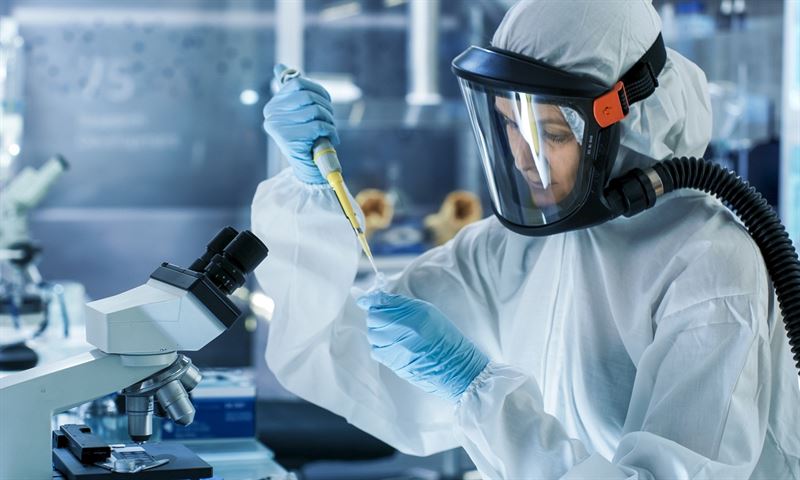
What comes to your mind when you hear the word “deadliest disease”? Obviously the incurable and the most painful ones. Not only do they lead to physical deterioration, but they also disturb the person and his family mentally. The pain of losing their loved ones eat them every moment. Nearly 61% of deaths in India are due to non-communicable diseases.
With the advancement in medical and healthcare, a lot has changed. Many deadly diseases can be examined at a very early stage and proper treatment can be done to cure them. However, there are still a few diseases that are very difficult to cure, i.e., almost next to impossible.
Here’s the list of top 5 killer death diseases:
According to the reports, the top causes of death in India is due to cardiovascular diseases, respiratory diseases, and tuberculosis.
1. Cardiovascular Diseases
Cardiovascular diseases are the top causes of death, which has affected both rural as well as urban populations. Deaths due to cardiovascular diseases in India has increased from 1.3 million in 1990 to 2.8 million in 2016. It can be mostly seen in adults below 70 years. The most common cardiovascular diseases are as follows.
- Coronary artery disease
- Heart attack
- Abnormal heart rhythms
- Heart failure
- Heart valve disease
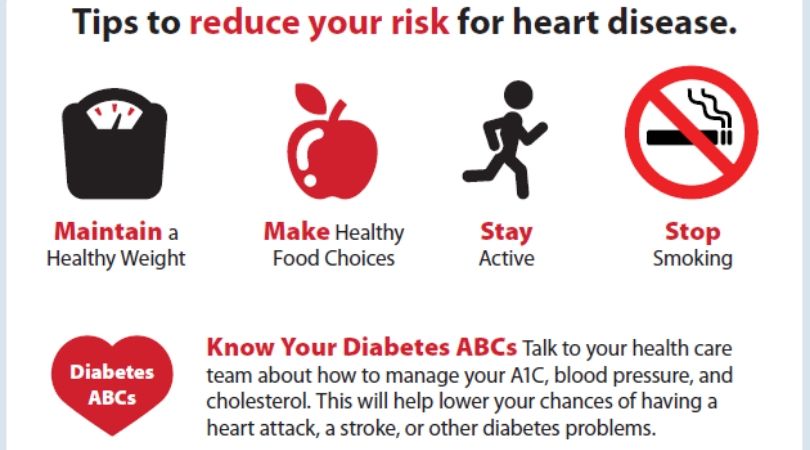
Symptoms
- Pain or discomfort in the chest or arms, shoulders, elbow.
- Shortness of breath
- Nausea
- Dizziness
Causes
- Consumption of tobacco
- Hereditary
- High cholesterol
- High BP
Also Read: Home Based Diet Tips On Cardiovascular Disease
2. Respiratory Diseases
Another big killer, i.e., respiratory diseases like Asthma, Lung Cancer, Pneumonia, etc. is caused by polluted air, smoking, etc. It has affected people of all ages and in all the corners of the world. Mostly it starts at an early age, but fortunately, many of these threats are avoidable and their consequences can be treated.
According to the survey, around 235 million people have asthma worldwide. The scenario in India is equally worrisome due to so much pollution. Most common respiratory diseases are –
- Asthma
- Chronic obstructive pulmonary disease (COPD)
- Chronic Bronchitis
- Emphysema
- Lung cancer
- Pneumonia
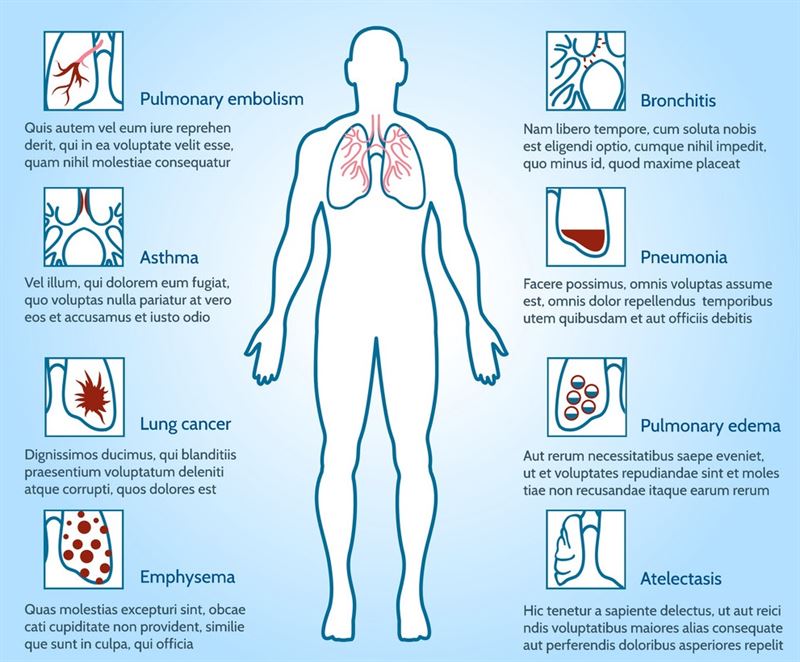
Symptoms
- Shortness of breath
- Wheezing
- Chest tightness
- Chronic cough
Causes
- Air pollution
- Smoking cigarettes
- Too much dust
3. Tuberculosis
Tuberculosis is an infectious disease that severely affects the lungs. Tuberculosis is the 2nd big killed globally.
In 2015, around 1.8 million people died from the disease, and approximately 10.4 were suffering from it. According to the World Health Organization, around 9 million people a year get sick from Tuberculosis. Tuberculosis is the top 3 causes of death for women aged 15 to 44.
There are two kinds of Tuberculosis infection
1. Latent TB – In this infection, the bacteria remain in the body in an inactive state. They cause no symptoms and are not contagious, but they can become active. There is only 10 % chances of latent TB to become active. This risk is much higher in people who have weakened immune systems, such as people living with HIV, malnutrition, or people who smoke.
2. Active TB – The bacteria do cause symptoms and can be transmitted to others.

Symptoms
- Low-grade fever
- Night sweats
- All-time weakness
- Chest pain
Causes –
- Bacteria (Mycobacterium) that spreads from person to person.
- Coughing, sneezing frequently
Also Read: Dietary Advice For Tuberculosis Patients
4. HIV AIDS
HIV AIDS is the acronym for Human Immunodeficiency Virus infection and Acquired Immune Deficiency Syndrome. In 2016, around 36.7 million people were living with HIV and it resulted in about 1 million deaths.
It is estimated that around 5000 people get infected every day. It is spread primarily by unprotected sex (Oral & Anal), contaminated blood transfusions, contaminated needles, during pregnancy, or breastfeeding.
Stages Of HIV AIDs
1. Infection
HIV quickly recreates in the body after infection. In some people, flu-like symptoms develop, for example, fever, headache, sore throat and a rash within a few days or a week after infection. In this duration, the immune system starts reacting with the virus by developing antibodies, which is known as seroconversion.
2. Asymptomatic
In this stage of HIV, the infection does not cause external signs or symptoms. People may look and feel good, but HIV is continuing to weaken their immune system. This stage may last several years (around an average of 8 to 10 years) and without an HIV test. Many people are not aware that they are infected.
3. Symptomatic
As time passes, the immune system becomes damaged and weakened by HIV and symptoms start to develop. Initially, symptoms can be severe and they get worse. Symptoms include fatigue, mouth ulcers, thrush and severe diarrhea. The emergence of opportunistic infections causes these symptoms. They referred to as opportunistic infections because they take advantage of a weakened immune system of the person. Some examples of opportunistic infections are PCP, TB, Toxoplasmosis and Kaposi Sarcoma.
4. Progression of HIV to AIDS
There are various primary tests for diagnosing HIV and AIDS-like ELISA Test, which stands for enzyme-linked immunosorbent assay, is used to detect HIV infection, Home Test, Saliva Test and Viral load Test. Doctors will diagnose a variety of symptoms including the CD4+T count, the viral load and the presence of opportunistic infections in order to make an AIDS diagnosis
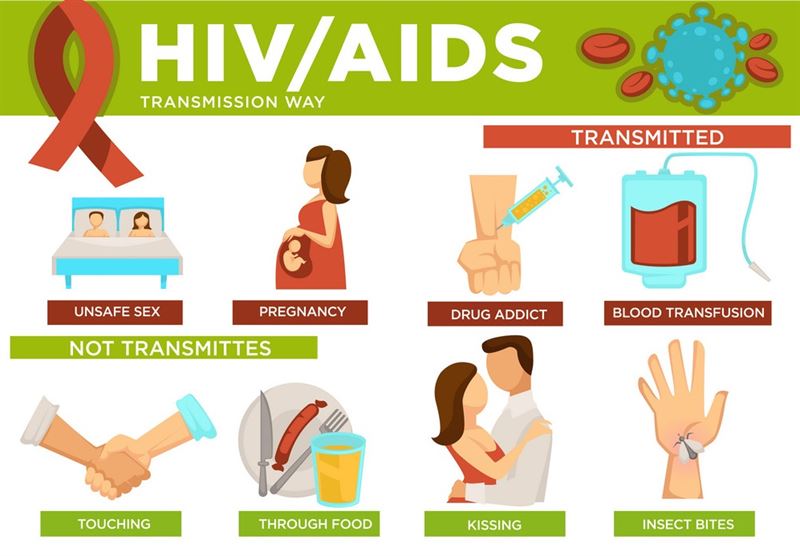
Symptoms –
- Rapid weight loss
- Night sweats
- Continual fever
- Extreme fatigue
- Tiredness
- Muscle aches
- Mouth ulcers
Causes –
- Unprotected sex
- Infected needles
- Contaminated blood transfusions
Also Read: 1St Dec- World’s Aids Day-7Myths About Hiv Aids
5. Cirrhosis
Cirrhosis is the excessive damage to the liver. The liver damage done by cirrhosis generally cannot be cured. But if liver cirrhosis is diagnosed early and it can be treated, further damage can be limited and, rarely reversed.
Major Complications Of Cirrhosis
1. High Blood Pressure: When Cirrhosis occurs, it slows the normal flow of blood through the liver. This increases the pressure in the vein that brings blood to the liver from the intestines and spleen.
2. Swelling in the Legs and Abdomen. High blood pressure in the portal vein can cause fluid to accumulate in the legs and the abdomen. This also may result in the inability of the liver to make enough of specific blood proteins, such as albumin.
3. Enlargement of the Spleen: Portal hypertension can also cause swelling of the spleen and trapping of white blood cells and platelets. Decreased white blood cells and platelets in the blood are the first sign of cirrhosis.
4. Buildup of toxins in the Brain: A liver harmed by cirrhosis can’t clear toxins from the blood just as a solid liver can. These toxins would then be able to develop in the cerebrum and cause mental disarray and trouble concentrating. With time, hepatic encephalopathy can cause unconsciousness or coma.
5. Jaundice. Jaundice happens when the unhealthy liver doesn’t expel enough bilirubin, blood waste item, from your blood. Jaundice causes yellowing of the body and white eyes and obscuring of pee.
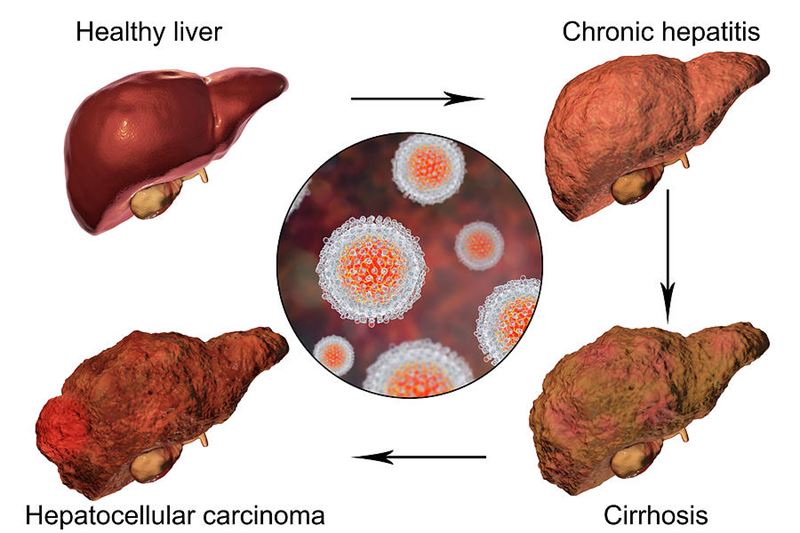
Symptoms –
Cirrhosis has no signs or symptoms until liver damage is extensive. But you can check the symptoms of Cirrhosis by diagnosing. A few of them are mentioned below.
- Fatigue
- Easily bleeding
- Loss of appetite
- Nausea
- Itchy skin
- Swelling in legs
Causes –
Numerous diseases and conditions can damage the liver and lead to cirrhosis. Some of the reasons include
- Excessive consumption of alcohol
- Viral hepatitis
- Genetic digestive disorder
- Poor immune system
- Obesity
Some diseases are curable, while some are not. But we all have heard that famous phrase “Prevention is better than cure.” No matter how deadly the disease is, there exist some precautions that can be taken to save a person from that disease. Want to be safe from asthma? Don’t smoke. Want to be safe from cardiovascular diseases?
Eat healthy and low cholesterol food.
Stay safe. Stay healthy!!









